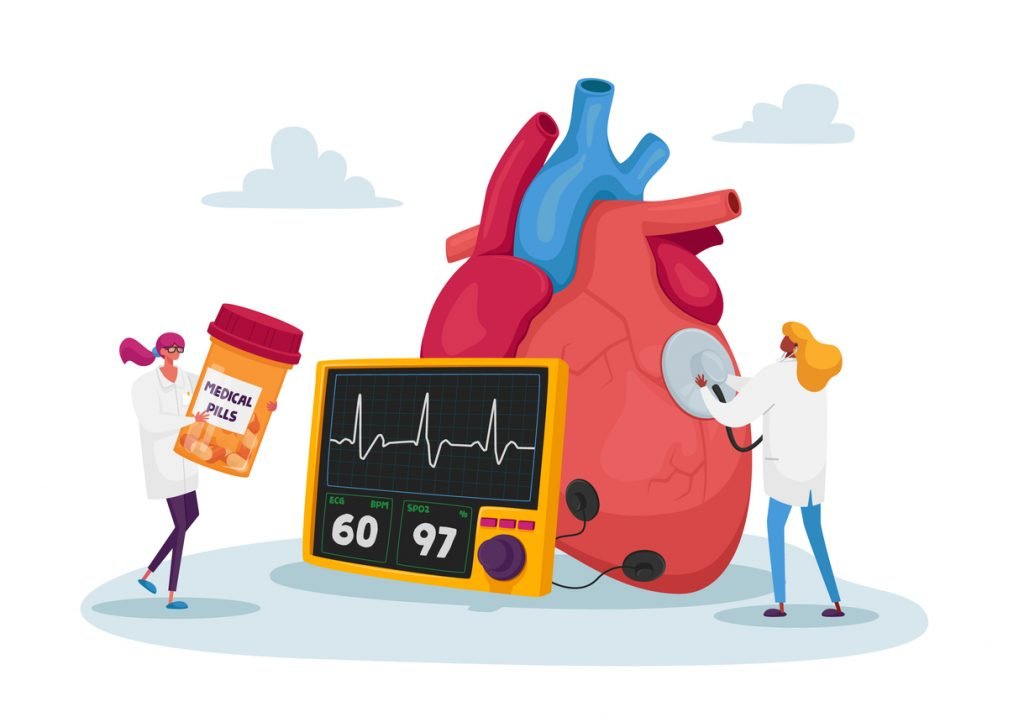
Can something as simple as breathing promote a healthier heart? This is a question that, believe it or not, I am very interested in answering. The simple answer is probably, but to understand why, there is a lot nuance. The first disclaimer to this lengthy entry is that I am not medical doctor. Rather, I have a PhD in clinical psychology with a concentration in health psychology. I study how our thoughts, emotions, and, to a degree, behaviors impact health. Breathing for heart health is something I think we should all want to learn more about.
There is a growing body of research that would support there is a benefit to heart health with specific breathing exercises. This article will focus mainly on a specific intervention called heart rate variability biofeedback (HRVB), but other breathing strategies will be discussed. Let’s dive into the specifics.
What is Heart Rate Variability and How is it Used in Biofeedback?
Heart rate variability is a measurement that has gained increasing popularity in health, both physical and emotional. Generally speaking, organized variability of the heart rate is considered to be a reliable indicator of overall heart health. It is measured in many ways, but in general popular devices report the standard deviation of the beat-to-beat differences in heart rate and is reported in milliseconds. There is a lot of literature regarding the measurement of heart rate variability. This is different than its utilization in biofeedback.

Biofeedback is the practice of recording an automatic physiological aspect of an individual and feeding back some quality of this measurement to the person. For the purposes of this article, we will be discussing one popular modality of biofeedback that combines HRV and biofeedback.
Generally, this is a technique in which an individual breathes at a slow and steady pace which increases the variability of the heart rate. This occurs due to a reflex that is caused by the breath, called respiratory sinus arrhythmia. The pace is generally not the same between individuals and thus it does require a trained provider to facilitate.
Breathing Benefits for Heart Health
Hypertension
A systematic review of the literature published in 2021 evaluated 12 studies conducted between 2002 and 2021 assessing heart health outcomes and HRVB. The results generally support a benefit to heart health and hypertension.
Lin and colleagues (2012) conducted a randomized controlled trial (RCT) with prehypertension. In this study the average decrease in systolic blood pressure was 12.8 mmHg and there was a statistically significant benefit to HRVB versus slow abdominal breathing. Jones and colleagues (2010, 2015) conducted two RCTs with HRVB with similar outcomes. These studies were individuals with essential hypertension. There are a lot more in this review to consider, so I recommend taking a look at the systematic review above when you have the time.

Another non-pharmacological intervention designed around breathing is a device called the RESPeRATE. The device itself might be considered a respiration biofeedback device that helps pace breathing. This is not HRVB, but according to their research they have seen an average decrease of 10/5 mmHg. This is a commercial product, I am not endorsing or recommending this product. Rather, this is a product that assists in a slow breathing exercise that is relevant to this topic.
What is most interesting about HRVB specifically is that it may increase the sensitivity of baroreceptors. These are an innate biological mechanism for managing blood pressure. Of the studies listed in the review, several found an increase in baroreceptor sensitivity.
Consequently, slow breathing and more specifically HRVB might be a reasonable avenue for individuals to help manage hypertension.
Coronary Artery Disease
The same systematic review also looks at some studies related to coronary artery disease (CAD). Typically, the outcomes that are important differ in many ways between various heart health conditions such as hypertension, CAD, and heart failure. The most interesting study to me regarding CAD is Yu and colleagues (2018) which also was an RCT. The study found that all-cause readmission and all-cause emergency department visits were less than half of the same in the control group. Other studies in the same systematic review found that depression and hostility scores also decreased.

A more recent study by Lin and colleagues (2022) looked at anger and reactivity of those with coronary artery disease. Anger is often a physiological risk factor of a loss in regulatory balance. The study found that those who had gone through six sessions HRVB exhibited less reactivity to anger.
So, regarding coronary artery disease, the direct physiological connection is a bit less concrete. Outcomes such as hospital readmission, emergency room visits, depression, hostility, and physiological reactivity to anger appear to benefit from HRVB. There doesn’t seem to be significant evidence of slow paced breathing and a benefit for coronary artery disease.
Heart Failure
Heart failure, HRVB and slow paced breathing have some truly fascinating studies. During my clinical training I spent a rotation conducting presurgical psychological evaluations for heart transplant and left-ventricular assist devices (LVAD). So, the population means a lot to me, it also hits close to home as I have lost close family members due to heart failure.
The systematic review above included one study, Bernardi and colleagues (2002) which looked at a slow paced breathing exercise (approx. 6 breaths per minute/ 10 seconds per breath) for four minutes. The study found that baroreceptor sensitivity improved, blood pressure decreased, and overall hopeful results although long term benefits aren’t reflected in this study.
A pilot study done by Moravec and McKee (2013) suggests some startling and promising results regarding HRVB. Early research is suggestive of physiological remodeling of heart with biofeedback training.
Thus early evidence suggests that slow paced breathing and HRVB have shown both subjective and objective benefits to patients with heart failure. It is important to note that some of these studies are looking at complex physiological pathology and the research is still early.
Start Breathing for Your Heart Health
It’s only too late when it is too late. If you are interested in finding a local psychophysiologically trained biofeedback provider in your area the BCIA maintains a list of providers who are board certified in biofeedback. Providers trained in general modalities of biofeedback are indicated with BCB and those specifically trained in HRVB will be indicated with BCB-HRV. They may or may not accept insurance.
To get started on slow paced breathing now, read this about breathing to relax.
Leave a Reply